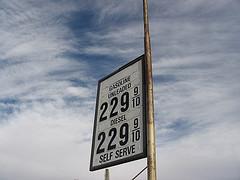
Motorists like the price of gasoline, but cheaper oil is taking a toll on the country’s economy. State and local governments are feeling significant pain. Large amounts of revenue flow into government coffers through severance taxes, production fees and sales tax revenues generated by people with jobs tied to the oil and gas industry. The reduced revenue hits government’s bottom line immediately – just as it does with private-sector companies.
Shrinking demand and excess supply drove oil prices down and the ripple effects are significant. Jobs have been lost and tax revenue has declined dramatically. Many states are in a quandary about budgets at the moment and the fallout will hit cities and counties just as hard.
The volatility of oil prices causes legislative grief throughout the United States. Without the ability to predict the market, factoring oil revenue into budgets is risky. And, without the revenue, everything planned is tentative. Legislators in oil-producing states such as Alaska, Louisiana, North Dakota, Oklahoma, Texas and Wyoming must now re-examine capital projects and tax cuts through a more conservative lens. Over two-dozen states depend heavily on revenue tied to oil and gas.
With up to 90 percent of Alaska’s budget funded by oil revenue from production taxes, petroleum property taxes, corporate income taxes and royalties, elected officials are scrambling for ways to close the budget deficit. Gov. Bill Walker has said that more than 300 state jobs could be lost and $550M in total unrestricted general funding may be gone.
Oil and gas revenues account for only 14 percent of Louisiana’s general fund revenues, but the governor has already slashed state spending by $180M. Additionally, just last month, a $14B gas-to-liquids plant project was put on hold indefinitely. All state agency budgets are anticipating 15 percent budget cuts and reductions are expected for higher education and health care spending.
Alaska will feel the impact of the fluctuating prices more painfully than most other oil producing states because severance taxes account for 80 percent of the total tax revenue. California, the third-largest crude oil producing state, does not depend on revenues as much and only 0.1 percent of its total tax revenues come from severance taxes. With such dire water infrastructure needs, it is a very good thing that California is not one of the states most impacted.
Many states distribute severance taxes to local governments. States like Colorado, Montana and North Dakota allocate a significant percentage of the state’s severance taxes to counties and local governments. That causes the ripple effect to hit cities and counties hard.
A recent forecast predicted that a typical American household will save $750 on gas this year. If that money is spent locally, sales tax collections could possibly balance out government revenue lost because of oil prices. But in regions where the majority of jobs are tied to the oil and gas industry, layoffs will obviously tamp down purchases, which in turn will reduce sales tax revenues.
In Texas, Republican leaders are pushing for tax relief which could cut $4B in state revenue. Supporters feel that revenue is adequate, but opponents argue that diminishing revenue from oil production makes the cuts too risky.
Overall, revenue diversification is the answer for every state and every region. But that’s not a quick solution. Luckily, enough states do have diversified revenue streams and because of that, the United States will most likely avoid a catastrophic economic downturn like the one attributed to oil in 1980. And, as most experts say, “This is a cycle and the price of oil will rise again.” The question is just…when?

